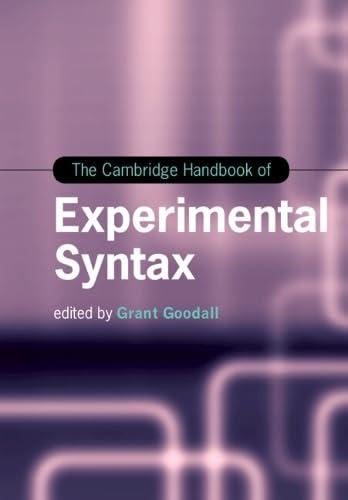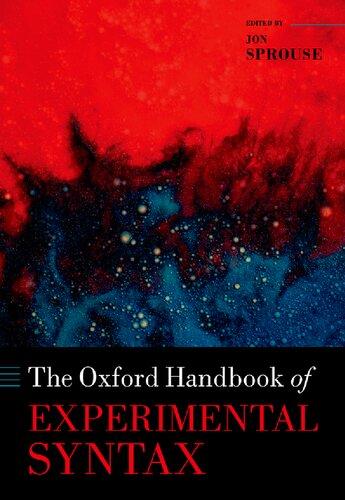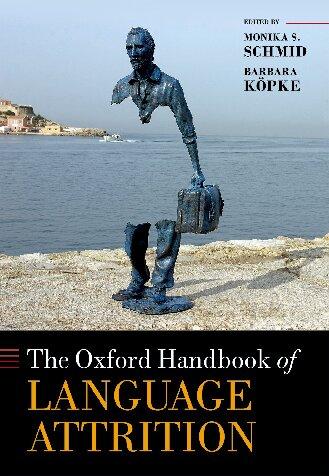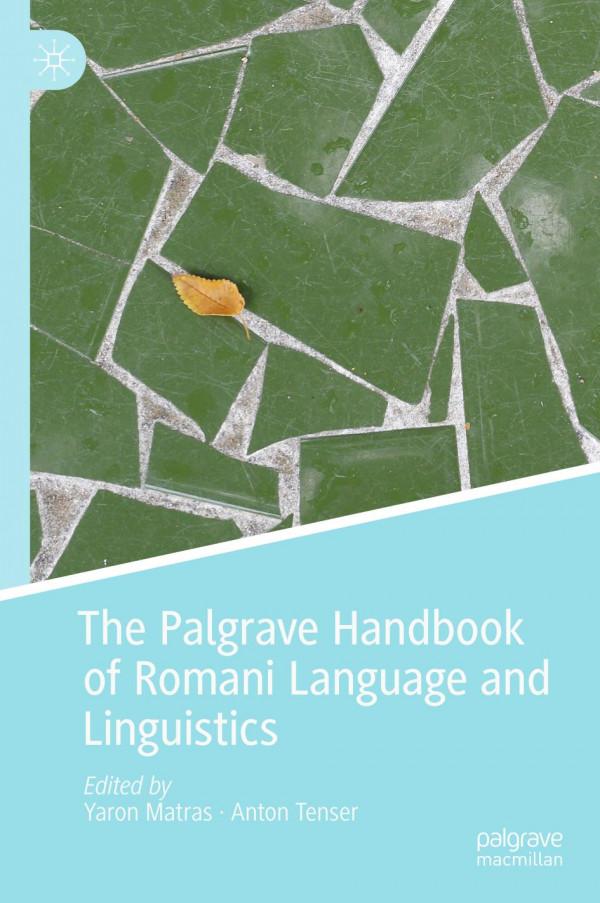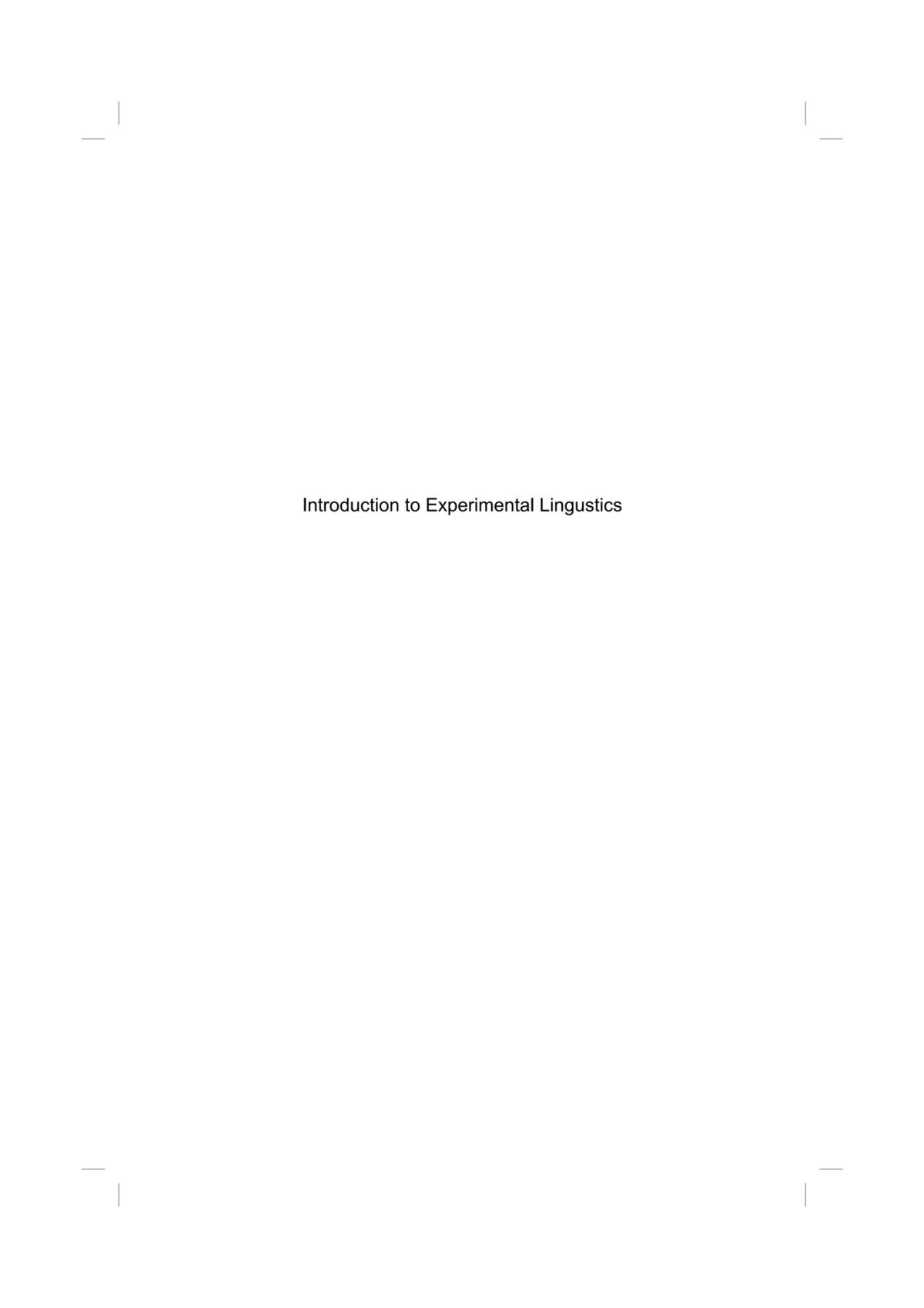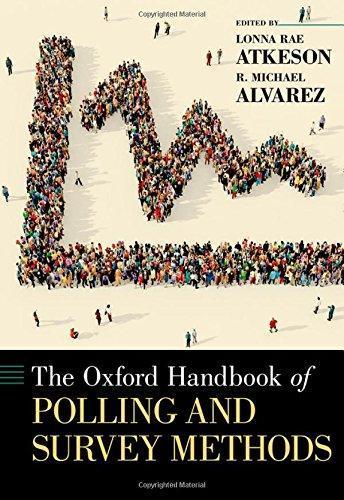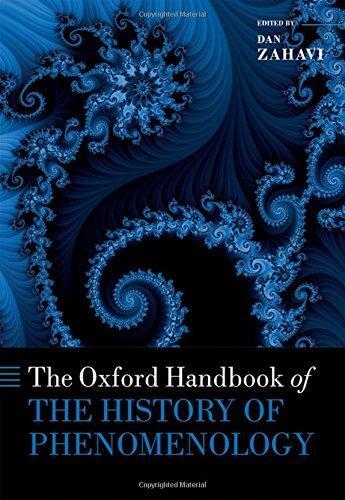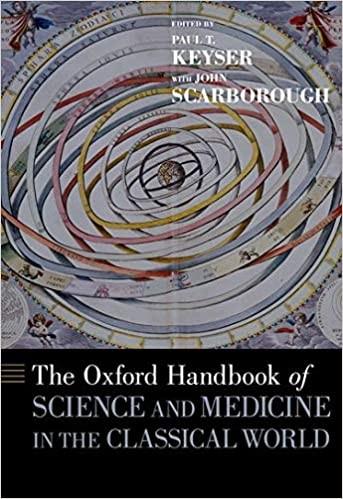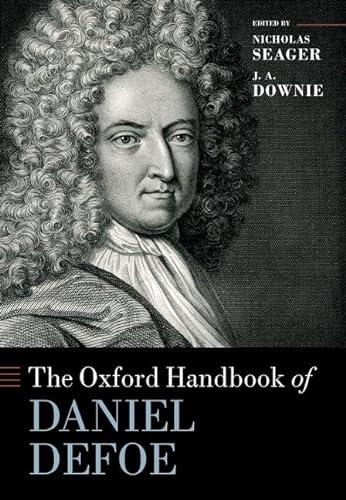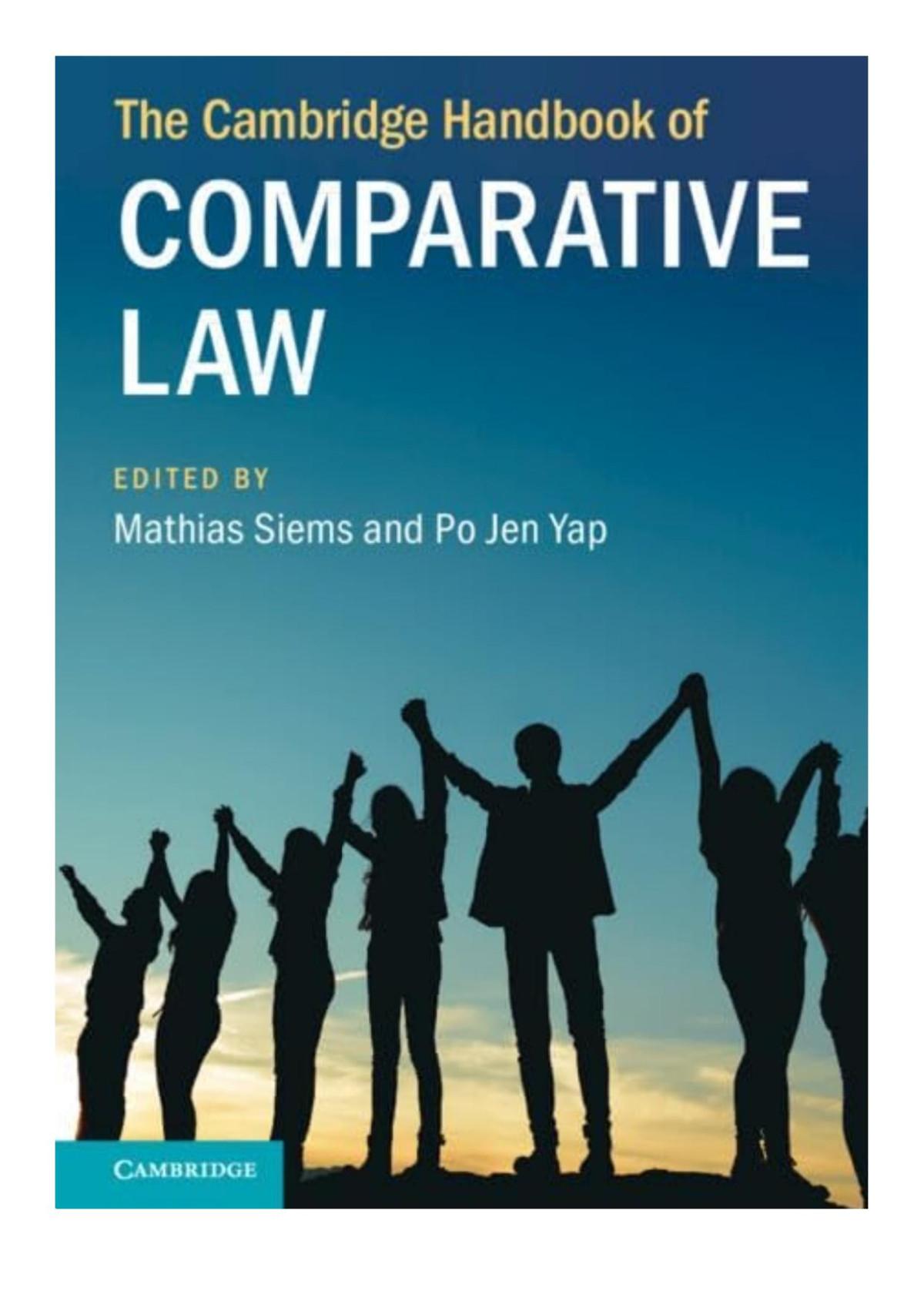The Cambridge Handbook of Experimental Syntax (Cambridge Handbooks in Language and Linguistics) Grant Goodall
Visit to download the full and correct content document: https://ebookmass.com/product/the-cambridge-handbook-of-experimental-syntax-cam bridge-handbooks-in-language-and-linguistics-grant-goodall/
More products digital (pdf, epub, mobi) instant download maybe you interests ...
The Oxford Handbook of Experimental Syntax Jon Sprouse
https://ebookmass.com/product/the-oxford-handbook-ofexperimental-syntax-jon-sprouse/
The Oxford Handbook of Language Attrition (Oxford Handbooks) Monika S. Schmid (Editor)
https://ebookmass.com/product/the-oxford-handbook-of-languageattrition-oxford-handbooks-monika-s-schmid-editor/
The Palgrave Handbook of Romani Language and Linguistics 1st ed. 2020 Edition Yaron Matras
https://ebookmass.com/product/the-palgrave-handbook-of-romanilanguage-and-linguistics-1st-ed-2020-edition-yaron-matras/
Introduction to Experimental Linguistics Christelle Gillioz
https://ebookmass.com/product/introduction-to-experimentallinguistics-christelle-gillioz/
The Oxford Handbook of Polling and Survey Methods (Oxford Handbooks)
https://ebookmass.com/product/the-oxford-handbook-of-polling-andsurvey-methods-oxford-handbooks/
The Oxford Handbook of the History Phenomenology (Oxford Handbooks)
https://ebookmass.com/product/the-oxford-handbook-of-the-historyphenomenology-oxford-handbooks/
The Oxford Handbook of Science and Medicine in the Classical World (Oxford Handbooks) Paul Keyser
https://ebookmass.com/product/the-oxford-handbook-of-science-andmedicine-in-the-classical-world-oxford-handbooks-paul-keyser/
The Oxford Handbook of Daniel Defoe (Oxford Handbooks) Seager
https://ebookmass.com/product/the-oxford-handbook-of-danieldefoe-oxford-handbooks-seager/
The Cambridge Handbook of Comparative Law Mathias Siems
https://ebookmass.com/product/the-cambridge-handbook-ofcomparative-law-mathias-siems/
TheCambridgeHandbookofExperimentalSyntax Experimentalsyntaxisanareathatisrapidlygrowingaslinguisticresearch becomesincreasinglyfocusedonreplicablelanguagedata,inbothfieldwork andlaboratoryenvironments.Thefirstofitskind,thishandbookprovidesan in-depthoverviewofcurrentissuesandtrendsinthisfield,withcontributions fromleadinginternationalscholars.Itpaysspecialattentiontosentence acceptabilityexperiments,outliningcurrentbestpracticesinconducting tests,andpointingoutpromisingnewavenuesforfutureresearch.Separate sectionsreviewresearchresultsfromthepast20years,coveringspecific syntacticphenomenaandlanguagetypes.Thehandbookalsooutlinesother commonpsycholinguisticandneurolinguisticmethodsforstudyingsyntax, comparingandcontrastingthemwithacceptabilityexperiments,andgiving usefulperspectivesontheinterplaybetweentheoreticalandexperimental linguistics.Providinganup-to-datereferenceonthisexcitingfield,itisessentialreadingforstudentsandresearchersinlinguisticsinterestedinusing experimentalmethodstoconductsyntacticresearch.
GRANTGOODALL isProfessorofLinguisticsatUniversityofCalifornia,San Diego.Heistheauthoroftheinfluential1987book ParallelStructuresinSyntax andofmanyimportantarticlesonsyntacticphenomenainEnglish,Spanish, andotherlanguages.Inrecentyears,hehasbeenattheforefrontofusing experimentaltechniquestoaddresslongstandingquestionsinsyntactic theory.
TheCambridge Handbookof ExperimentalSyntax Editedby GrantGoodall
UniversityofCalifornia,SanDiego
UniversityPrintingHouse,CambridgeCB28BS,UnitedKingdom OneLibertyPlaza,20thFloor,NewYork,NY10006,USA
477WilliamstownRoad,PortMelbourne,VIC3207,Australia
314–321,3rdFloor,Plot3,SplendorForum,JasolaDistrictCentre, NewDelhi – 110025,India
103PenangRoad,#05–06/07,VisioncrestCommercial,Singapore238467
CambridgeUniversityPressispartoftheUniversityofCambridge. ItfurtherstheUniversity’smissionbydisseminatingknowledgeinthepursuitof education,learning,andresearchatthehighestinternationallevelsofexcellence.
www.cambridge.org
Informationonthistitle: www.cambridge.org/9781108474801 DOI: 10.1017/9781108569620
© CambridgeUniversityPress2021
Thispublicationisincopyright.Subjecttostatutoryexception andtotheprovisionsofrelevantcollectivelicensingagreements, noreproductionofanypartmaytakeplacewithoutthewritten permissionofCambridgeUniversityPress. Firstpublished2021
PrintedintheUnitedKingdombyTJBooksLimited,Padstow,Cornwall AcataloguerecordforthispublicationisavailablefromtheBritishLibrary.
LibraryofCongressCataloging-in-PublicationData Names:Goodall,Grant,editor.
Title:TheCambridgehandbookofexperimentalsyntax/editedbyGrantGoodall. Description:Cambridge;NewYork,NY:CambridgeUniversityPress,2021.| Includesbibliographicalreferencesandindex.
Identifiers:LCCN2021001515(print)|LCCN2021001516(ebook)|ISBN 9781108474801(hardback)|ISBN9781108465496(paperback)|ISBN 9781108569620(ebook)
Subjects:LCSH:Grammar,Comparativeandgeneral–Syntax.|Acceptability (Linguistics)|Linguistics–Methodology.
Classification:LCCP291.C3252021(print)|LCCP291(ebook)|DDC415–dc23 LCrecordavailableat https://lccn.loc.gov/2021001515 LCebookrecordavailableat https://lccn.loc.gov/2021001516
ISBN978-1-108-47480-1Hardback
CambridgeUniversityPresshasnoresponsibilityforthepersistenceoraccuracyof URLsforexternalorthird-partyinternetwebsitesreferredtointhispublication anddoesnotguaranteethatanycontentonsuchwebsitesis,orwillremain, accurateorappropriate.
TheCambridgeHandbookofExperimentalSyntax Experimentalsyntaxisanareathatisrapidlygrowingaslinguisticresearch becomesincreasinglyfocusedonreplicablelanguagedata,inbothfieldwork andlaboratoryenvironments.Thefirstofitskind,thishandbookprovidesan in-depthoverviewofcurrentissuesandtrendsinthisfield,withcontributions fromleadinginternationalscholars.Itpaysspecialattentiontosentence acceptabilityexperiments,outliningcurrentbestpracticesinconducting tests,andpointingoutpromisingnewavenuesforfutureresearch.Separate sectionsreviewresearchresultsfromthepast20years,coveringspecific syntacticphenomenaandlanguagetypes.Thehandbookalsooutlinesother commonpsycholinguisticandneurolinguisticmethodsforstudyingsyntax, comparingandcontrastingthemwithacceptabilityexperiments,andgiving usefulperspectivesontheinterplaybetweentheoreticalandexperimental linguistics.Providinganup-to-datereferenceonthisexcitingfield,itisessentialreadingforstudentsandresearchersinlinguisticsinterestedinusing experimentalmethodstoconductsyntacticresearch.
GRANTGOODALL isProfessorofLinguisticsatUniversityofCalifornia,San Diego.Heistheauthoroftheinfluential1987book ParallelStructuresinSyntax andofmanyimportantarticlesonsyntacticphenomenainEnglish,Spanish, andotherlanguages.Inrecentyears,hehasbeenattheforefrontofusing experimentaltechniquestoaddresslongstandingquestionsinsyntactic theory.
TheCambridge Handbookof ExperimentalSyntax Editedby GrantGoodall
UniversityofCalifornia,SanDiego
UniversityPrintingHouse,CambridgeCB28BS,UnitedKingdom OneLibertyPlaza,20thFloor,NewYork,NY10006,USA
477WilliamstownRoad,PortMelbourne,VIC3207,Australia
314–321,3rdFloor,Plot3,SplendorForum,JasolaDistrictCentre, NewDelhi – 110025,India
103PenangRoad,#05–06/07,VisioncrestCommercial,Singapore238467
CambridgeUniversityPressispartoftheUniversityofCambridge. ItfurtherstheUniversity’smissionbydisseminatingknowledgeinthepursuitof education,learning,andresearchatthehighestinternationallevelsofexcellence.
www.cambridge.org
Informationonthistitle: www.cambridge.org/9781108474801 DOI: 10.1017/9781108569620
© CambridgeUniversityPress2021
Thispublicationisincopyright.Subjecttostatutoryexception andtotheprovisionsofrelevantcollectivelicensingagreements, noreproductionofanypartmaytakeplacewithoutthewritten permissionofCambridgeUniversityPress. Firstpublished2021
PrintedintheUnitedKingdombyTJBooksLimited,Padstow,Cornwall AcataloguerecordforthispublicationisavailablefromtheBritishLibrary.
LibraryofCongressCataloging-in-PublicationData Names:Goodall,Grant,editor.
Title:TheCambridgehandbookofexperimentalsyntax/editedbyGrantGoodall. Description:Cambridge;NewYork,NY:CambridgeUniversityPress,2021.| Includesbibliographicalreferencesandindex.
Identifiers:LCCN2021001515(print)|LCCN2021001516(ebook)|ISBN 9781108474801(hardback)|ISBN9781108465496(paperback)|ISBN 9781108569620(ebook)
Subjects:LCSH:Grammar,Comparativeandgeneral–Syntax.|Acceptability (Linguistics)|Linguistics–Methodology.
Classification:LCCP291.C3252021(print)|LCCP291(ebook)|DDC415–dc23 LCrecordavailableat https://lccn.loc.gov/2021001515 LCebookrecordavailableat https://lccn.loc.gov/2021001516
ISBN978-1-108-47480-1Hardback
CambridgeUniversityPresshasnoresponsibilityforthepersistenceoraccuracyof URLsforexternalorthird-partyinternetwebsitesreferredtointhispublication anddoesnotguaranteethatanycontentonsuchwebsitesis,orwillremain, accurateorappropriate.
TheCambridgeHandbookofExperimentalSyntax Experimentalsyntaxisanareathatisrapidlygrowingaslinguisticresearch becomesincreasinglyfocusedonreplicablelanguagedata,inbothfieldwork andlaboratoryenvironments.Thefirstofitskind,thishandbookprovidesan in-depthoverviewofcurrentissuesandtrendsinthisfield,withcontributions fromleadinginternationalscholars.Itpaysspecialattentiontosentence acceptabilityexperiments,outliningcurrentbestpracticesinconducting tests,andpointingoutpromisingnewavenuesforfutureresearch.Separate sectionsreviewresearchresultsfromthepast20years,coveringspecific syntacticphenomenaandlanguagetypes.Thehandbookalsooutlinesother commonpsycholinguisticandneurolinguisticmethodsforstudyingsyntax, comparingandcontrastingthemwithacceptabilityexperiments,andgiving usefulperspectivesontheinterplaybetweentheoreticalandexperimental linguistics.Providinganup-to-datereferenceonthisexcitingfield,itisessentialreadingforstudentsandresearchersinlinguisticsinterestedinusing experimentalmethodstoconductsyntacticresearch.
GRANTGOODALL isProfessorofLinguisticsatUniversityofCalifornia,San Diego.Heistheauthoroftheinfluential1987book ParallelStructuresinSyntax andofmanyimportantarticlesonsyntacticphenomenainEnglish,Spanish, andotherlanguages.Inrecentyears,hehasbeenattheforefrontofusing experimentaltechniquestoaddresslongstandingquestionsinsyntactic theory.
TheCambridge Handbookof ExperimentalSyntax Editedby GrantGoodall
UniversityofCalifornia,SanDiego
UniversityPrintingHouse,CambridgeCB28BS,UnitedKingdom OneLibertyPlaza,20thFloor,NewYork,NY10006,USA
477WilliamstownRoad,PortMelbourne,VIC3207,Australia
314–321,3rdFloor,Plot3,SplendorForum,JasolaDistrictCentre, NewDelhi – 110025,India
103PenangRoad,#05–06/07,VisioncrestCommercial,Singapore238467
CambridgeUniversityPressispartoftheUniversityofCambridge. ItfurtherstheUniversity’smissionbydisseminatingknowledgeinthepursuitof education,learning,andresearchatthehighestinternationallevelsofexcellence.
www.cambridge.org
Informationonthistitle: www.cambridge.org/9781108474801 DOI: 10.1017/9781108569620
© CambridgeUniversityPress2021
Thispublicationisincopyright.Subjecttostatutoryexception andtotheprovisionsofrelevantcollectivelicensingagreements, noreproductionofanypartmaytakeplacewithoutthewritten permissionofCambridgeUniversityPress. Firstpublished2021
PrintedintheUnitedKingdombyTJBooksLimited,Padstow,Cornwall AcataloguerecordforthispublicationisavailablefromtheBritishLibrary.
LibraryofCongressCataloging-in-PublicationData Names:Goodall,Grant,editor.
Title:TheCambridgehandbookofexperimentalsyntax/editedbyGrantGoodall. Description:Cambridge;NewYork,NY:CambridgeUniversityPress,2021.| Includesbibliographicalreferencesandindex.
Identifiers:LCCN2021001515(print)|LCCN2021001516(ebook)|ISBN 9781108474801(hardback)|ISBN9781108465496(paperback)|ISBN 9781108569620(ebook)
Subjects:LCSH:Grammar,Comparativeandgeneral–Syntax.|Acceptability (Linguistics)|Linguistics–Methodology.
Classification:LCCP291.C3252021(print)|LCCP291(ebook)|DDC415–dc23 LCrecordavailableat https://lccn.loc.gov/2021001515 LCebookrecordavailableat https://lccn.loc.gov/2021001516
ISBN978-1-108-47480-1Hardback
CambridgeUniversityPresshasnoresponsibilityforthepersistenceoraccuracyof URLsforexternalorthird-partyinternetwebsitesreferredtointhispublication anddoesnotguaranteethatanycontentonsuchwebsitesis,orwillremain, accurateorappropriate.
ListofFigurespage vii
ListofTables viii
ListofContributors x
1SentenceAcceptabilityExperiments:What,How, andWhy GrantGoodall
2ResponseMethodsinAcceptabilityExperiments Sam Featherston 39
3ApproachingGradienceinAcceptabilitywiththeToolsofSignal DetectionTheory BrianDillonandMatthewW.Wagers 62
4VariationinParticipantsandStimuliinAcceptability Experiments JanaHa ¨ usslerandTomS.Juzek 97
5Acceptability,Grammar,andProcessing GisbertFanselow 118
6Satiation WilliamSnyder 154
7Acceptability(andOther)ExperimentsforStudying ComparativeSyntax DustinA.Chaco ´ n 181
9IslandEffects JonSprouseandSandraVillata
10The That-TraceEffect WayneCowartandDanaMcDaniel 258
11Anaphora:ExperimentalMethodsforInvestigating Coreference ElsiKaiser
12ConstituentOrderandAcceptability ThomasWeskott 315
13AcceptabilityJudgmentsattheSyntax–Semantics Interface JesseHarris 341
PartIII ExperimentalStudiesofSpecificPopulations andLanguageFamilies
14AcceptabilityStudiesinL2Populations TaniaIonin
15JudgmentsofAcceptability,Truth,andFelicityinChild Language RosalindThornton
16AcceptabilityandTruth-ValueJudgmentStudiesinEastAsian Languages ShinFukuda 421
17AcceptabilityExperimentsinRomanceLanguages TaniaLeal andTimothyGupton 448
18AcceptabilityStudiesin(Non-English)Germanic Languages MarkusBader
19AcceptabilityStudiesinSemiticLanguages Aya Meltzer-Asscher
20ExperimentalSyntaxandSlavicLanguages ArthurStepanov
21AcceptabilityJudgmentsinSignLinguistics VadimKimmelman
22TheoriesAlltheWayDown:Remarkson“Theoretical”and “Experimental”Linguistics ColinPhillips,PhoebeGaston,Nick Huang,andHannaMuller
23Eye-TrackingandSelf-PacedReading ClaudiaFelser
24NothingEntirelyNewundertheSun:ERPResponsesto ManipulationsofSyntax
1.1Effectofdependencylengthonrelativeclauses (Keffala2011) page 23
1.2 Wh-extractionfromthreetypesofsubjects 27
3.1Sprouseetal.’sfactorialdesignandahypothetical illustrationofhowscalebiascouldcreateaspurious interactioninthedifferenceofdifferences 67
3.2Theprocessofrenderingabinaryor n-pointLikert acceptabilityjudgmentfromtheperspectiveofSignal DetectionTheory 72
3.3Impliedequal-variancesignal/noisedistributionsinBare/ VPGapconditions 79
3.4ROCsandzROCsforallcomparisons 83
3.5ROCforVPGap/WhPBareconditionillustratingA 85
3.6Impliedunequal-variancesignal/noisedistributions 87
3.7DiagnosingbimodalitywithROCanalysis 91
6.1ParticipantinstructionsinSnyder(2000) 158
7.1Meannormalizedratingsbyconditionandlanguagefor Experiments1and2(Chaco ´ n2015) 193
9.1Thegraphicalpredictionsofthe2 × 2designfor whether-islands 232
10.1 That-traceeffect 262
10.2 That-traceeffectacrossregions 263
10.3Test,reteststudyof that-trace 263
10.4 That-traceeffectacrossverbs 265
10.5 That-traceeffectrelativetodeclarativecontrols 266
10.6 That-traceeffectsinGerman(left)comparedto English(right) 268
21.1RSLsign 1CL ( ROUND )- GIVE a (firstandlastframes) 562
27.1Corticalanatomyrelevanttolanguage 748
27.2ResultsofPallieretal.(2011) 754
27.3Anillustrationofthemodel-basedapproach 756
1.1Afactorialdesignformeasuringthe that-traceeffect page 11
1.2AtableofcomponentsforCondition1 13
1.3Counterbalancedlistsofexperimentalstimuliusing aLatinsquaredesign 14
1.4Planningtableforfillersassumingafactorialdesignasin Table1.1,6tokenspercondition,anda2:1 filler-experimentalratio 15
1.5Examplefillersforanexperimentwithafactorialdesignas inTable1.1 16
1.6Afactorialdesignformeasuringtheislandeffectwith partial wh-movement 30
3.1Exampleitemset 77
3.2Binaryjudgmentresults 77
3.3Summaryofsensitivityandbiasintheequalvariance analysis 80
3.4ConfidenceratingsinVP:Gap/WhP:Bareconditions 81
3.5TransformingconfidenceratingstoanROCcurve 82
3.6Summaryofsensitivityandvarianceinunequalvariance analysis 86
6.1Satiationexperimentsonargument/adjunctextraction from whether-islands 164
6.2SatiationexperimentsonCNPCviolations 165
6.3Satiationexperimentsonsubject-islandviolations 166
6.4Satiationexperimentsonadjunct-islandandLBC violations 167
6.5Satiationexperimentson that-traceand want-for violations 168
8.1SummaryofsentenceacceptabilitystudiesonEnglish resumption 220
9.1A(potentiallyincomplete)summaryoftheacceptability judgmentsatiationliteratureforfourislandtypes 243
9.2A(potentiallyincomplete)summaryofformal experimentalstudiesonislandeffects 245
9.3A(potentiallyincomplete)summaryofstudieson resumptivepronounsusingformalacceptabilityjudgment methods 250
15.1Percentageofnon-adultjudgmentsbygroup 405
15.2Thedifferenceinratingsbetweenungrammatical intransitiveverbsandungrammaticaltransitivecausative verbsfordifferentfrequencyverbsbyage 407
16.1Numbersofparticipantswhoaccepted NEG > ∀ scope 432
18.1Overviewofadditionalsyntacticphenomenathathave beenthesubjectofacceptabilitystudiesbutarenot discussedinthischapter 499
27.1Overviewofneuroimagingmethods 743
27.2StimulusdesignofPallieretal.(2011) 753
Contributors MarkusBader,GoetheUniversityFrankfurt
DustinA.Chaco ´ n,NewYorkUniversityAbuDhabi
WayneCowart,UniversityofSouthernMaine
BrianDillon,UniversityofMassachusetts,Amherst
GisbertFanselow,UniversityofPotsdam
SamFeatherston,UniversityofTu¨bingen
ClaudiaFelser,UniversityofPotsdam
JeridFrancom,WakeForestUniversity
ShinFukuda,UniversityofHawai‘iatManoa
PhoebeGaston,UniversityofConnecticut
GrantGoodall,UniversityofCalifornia,SanDiego TimothyGupton,UniversityofGeorgia
Chung-hyeHan,SimonFraserUniversity
JesseHarris,UniversityofCalifornia,LosAngeles
JanaHa¨ussler,BielefeldUniversity
NickHuang,NationalUniversityofSingapore
TaniaIonin,UniversityofIllinoisatUrbana-Champaign
TomS.Juzek,SaarlandUniversity
ElsiKaiser,UniversityofSouthernCalifornia
VadimKimmelman,UniversityofBergen
RobertKluender,UniversityofCalifornia,SanDiego TaniaLeal,UniversityofNevada,Reno WilliamMatchin,UniversityofSouthCarolina
DanaMcDaniel,UniversityofSouthernMaine
AyaMeltzer-Asscher,TelAvivUniversity
ShotaMomma,UniversityofMassachusetts,Amherst
HannaMuller,UniversityofMaryland
ColinPhillips,UniversityofMaryland
WilliamSnyder,UniversityofConnecticut
JonSprouse,NewYorkUniversityAbuDhabi
ArthurStepanov,UniversityofNovaGorica
RosalindThornton,MacquarieUniversity
SandraVillata,UniversityofConnecticut
MatthewW.Wagers,UniversityofCalifornia,SantaCruz
ThomasWeskott,UniversityofGo¨ttingen
Introduction GrantGoodall
Thepresentvolumeisahandbookofexperimentalsyntax,butwhatis “experimentalsyntax?”Onecouldreasonablyarguethatallsyntaxis experimental,inthesensethattraditionalsyntacticresearchisbased onseriesofsmall,informalexperimentswherethesyntactician askswhetherparticularsentencesareacceptableinthelanguage. Syntacticiansmayaskthisofothers,inthecaseoffieldworkwith anative-speakingconsultant,orofthemselves,inthecaseofintrospective“armchair”work,orthroughsomecombinationofthetwo,butin anyevent,thereissomethingclearlyexperimentalabouttheapproach. Ontheotherhand,onemightunderstand“experimentalsyntax”to refertostudiesthatusethetoolsandtechniquesofformalexperiments, asinthetraditionofexperimentalpsychology,toexplorelinguistic behaviorrelevanttothestructureofsentences.Inthissense,muchof psycholinguisticsandneurolinguisticswouldbepartof“experimental syntax.”
Inpractice,though,theterm“experimentalsyntax”isgenerallyusedto refertotheintersectionofthetraditionalapproachofinformalexperimentsandtheapproachutilizingmoreformalexperimentsbasedon methodsfromexperimentalpsychology.Thatis,thelabel“experimental syntax”istypicallyappliedtostudiesthatfocusonthevaryingacceptabilityofparticularsentencetypesandexplorethisbymeansof formalexperiments.Asaconsequence,thishandbookisdevotedprimarily toexperimentalsyntaxinthissense,focusingontheuseofformalsentenceacceptabilityexperimentstostudyissuesinsyntactictheory. Nevertheless,thisapproachisbuiltuponatraditionofexperimental workinabroadersense,includingtheinformalexperimentsusedin syntacticresearchformanydecades,andhasmanypointsofcontact withthemoreconventionallyexperimentalworkofpsycholinguistsand neurolinguists,sotheseareasreceivesignificantattentioninthehandbookaswell.
Thegoalofthehandbookistoreviewwhatwehavelearnedinthearea ofexperimentalsyntax,butalsotomakesenseofwhatthisnewbodyof knowledgeistellingus,understandhowexperimentalstudiesrelatetothe studyofsyntaxmorebroadly,andexplorewhattypeofworkweshouldbe doingasthefieldmovesforward.Experimentalsyntaxhasexplodedin popularityoverthelastseveralyears,soapausetoreflectonwhatwehave doneandwherewearegoingissorelyneeded.
Thehandbookconsistsof27chapters,organizedintofourparts.PartIis devotedtosentenceacceptabilityexperimentsassuch:howtodothem, howtointerprettheresults,andhowtheycanbeofusetosyntacticians. Thistypeofexperimentpresentsmanymethodologicalchallengesin termsofdesigningthestimuli,choosingparticipants,creatinganappropriateresponsemethodfortheparticipants,andmakingsenseofthe gradienceintheirresponses,butitalsoleadstodeepquestionsaboutthe natureofacceptabilityandgrammaticality,andthevaryingresultsthat onecangetacrosstimeandacrosslanguages.
PartIIexploresparticularsyntacticphenomenathathavebeenstudied indepthusingacceptabilityexperimentsandrelatedmethods.Forsomeof thesephenomena,suchasresumptivepronounsandthe that-traceeffect, tomentiononlytwo,experimentalworkhashadsuchanimpactthateven “traditional”syntacticiansnowpaycloseattention,whileforsomeother phenomena,thebroaderinfluenceofexperimentalstudieshasbeenmore limited.Inallcases,though,athoroughreviewofwhathasbeenfoundso farandwhatremainstobeinvestigated,asisprovidedinthesechapters, shouldprovideanecessaryfoundationfornewwork.
InPartIII,thefocusisonusingtechniquesofexperimentalsyntaxto studyspecificpopulationsofspeakersandspecificgroupsoflanguages. Forstudyingthefirstlanguageofyoungchildrenandthesecondlanguageofspeakersofallages,forinstance,formalexperimentshavelong beenamainstay,butthesepopulationspresentspecialchallengesthat meanthatthetechniquesusedforadultnativespeakerscannotalways beutilizedasis.Forbetterorworse,thefieldsofchildlanguage acquisition,secondlanguageacquisition,andexperimentalsyntaxhave eachdevelopedtheirownexperimentaltraditionsrelativelyindependently,butwearenowinapositiontoreflectonthisandlookforthe mostproductivepathforward.Withregardtoexperimentalworkon differentlanguages,thesituationissimilarinthesensethateachlanguage(orlanguagefamily)maypresentitsownchallenges,suchas aneedtousenon-writtenstimulioralackofclarityastowhocounts asanativespeakerorsignerofthelanguage.Inaddition,specificsentencetypesinindividuallanguagesmaybedifficulttostudyexperimentallyforavarietyofreasons.Allofthechaptersin PartIII attemptto surveywhatexperimentalworkhasshownusforparticularpopulations andlanguagefamilies,andtorecommendareasforfurtherresearchthat couldbefruitful.
WhilemuchofPartsI–IIIlooksatacceptabilityexperiments, PartIV examinesotherexperimentalapproachestothestudyofsyntax.Manyof thetechniquesexaminedaretraditionallythoughtofasrelevantmainly forpsycholinguists,neurolinguists,orcomputationallinguists,butthe authorsshowtheycanaddressissuesofinteresttosyntacticiansofall stripes.Thisleadstobroaderquestionsabouttherelationbetweenthese typesofexperimentalmethodsandtheacceptabilityexperimentsthatare discussedinmanyoftheotherchapters,andatanevenbroaderlevel,the relationbetween“theoreticallinguistics”and“experimentallinguistics” ingeneral.
Itseemsclearnowthatthemethodologicalandconceptualsilosin whichlinguistshaveoperatedfordecades,withsyntacticiansrelyingon acceptabilityjudgmentsgatheredthroughfieldworkandintrospection andpsycholinguistsandothersrelyingonformalexperiments,willsoon beathingofthepast.Thetraditionofacceptabilityjudgmentshasyielded arichsetofdataandimportantinsights,ashasthetraditionofexperimentation,butsomeofthemostinterestingnewworknowcomesfrom tryingtointegratethesetwotraditions,bothintermsofmethodologyand intermsoftheoreticalconceptsandmechanisms.
Thoughthemethodologicalandconceptualsilosmaybeintheprocess ofbeingbrokendown,itislessclearwhatwillemergefromthis.Anew wayofdoingsyntaxwilltakethesustainedandthoughtfulworkofmany researchers,anditishopedthatthepresentvolumewillprovideasolid foundationforthisworkandinspiringideasonhowtomoveforward.
PartI GeneralIssues inAcceptability Experiments 1 SentenceAcceptability Experiments:What,How, andWhy GrantGoodall
Sentenceacceptabilityexperimentshavebecomeincreasinglycommon since Cowart(1997) firstpresentedadetailedmethodforcarryingthem out,butthereisstillrelativelylittleclarityamongsyntacticiansabout whatgoesintoawell-designedexperiment,howtoperformoneand interprettheresults,andwhyonemightwanttodothisinthefirst place.Thischapteraddressestheseconcerns,byprovidingrecommendationsandperspectiveonhowexperimentalapproachestoacceptability canbeunderstoodandputtouse. Section1.1 discussesthenotionof acceptabilityingeneralandtherolethatithasplayedinlinguistic research. Section1.2 entersintothedetailsofexperimentaldesign,giving anoverviewofthebestpracticesinacceptabilityexperimentsthathave emergedfromthelasttwodecadesofresearch. Section1.3 exploresthe varietyoffactors,bothgrammaticalandextra-grammatical,thatacceptabilityexperimentsseemtobeabletodetect,while Section1.4 addresses thequestionofwhyonemightundertaketheeffortofconductingacceptabilityexperiments.
1.1 Acceptability Anydescriptionofalanguageinevitablyincludesadescriptionofwhatis possible,e.g.,alistingofthephonemes,theallowablesyllablestructures, thepreferredwordorder,etc.Theseareessentiallydescriptionsofwhatis “acceptable”inthelanguage,andsuchdescriptionsformthecoreof grammaticalresearchinalltraditions.Bycharacterizingwhatisacceptable,suchdescriptionsalsomakeimplicitclaimsaboutwhatisnotacceptable.Moreexplicitclaimsofunacceptabilitywereoccasionallyincluded
IamgratefultothemembersoftheExperimentalSyntaxLabatUCSanDiegoandtoresearchassistantsChengruiZheng andNoahHermansenfortheirvaluablecomments,discussion,andassistanceinthepreparationofthischapter.
inclassical,Renaissance,andAmericanstructuralistgrammars(see Householder1973; Myers2017),butwiththeadventofgenerativegrammarinthemid-twentiethcentury,anditsemphasisonexplicitnessin grammaticaldescription,thedistinctionbetweenacceptabilityandunacceptabilitybecamemuchmoreimportant.Thisdistinctionplayedacrucial rolein Chomsky(1957),forinstance,andwasmuchmoreextensively discussedin Chomsky(1965).
Thefocusonacceptabilityvs.unacceptabilityalsoledtoamorenuanced understandingofwhattheseconceptsmean.Themostwidespreadview, proposedoriginallyin Chomsky(1965),isthat(un)acceptabilitymaybe influencedbyavarietyoffactors,ofwhich(un)grammaticalityisonlyone. Underthisview,then,“acceptability”and“grammaticality”arenotsynonyms,inthatasentencethatiswell-formedaccordingtoprinciplesofthe grammar,forinstance,mayturnouttobeunacceptableduetoparsing difficulties,etc.Bothconceptsarepresumablygradient(i.e.acceptability andgrammaticalityareboth“amatterofdegree,”in Chomsky‘s(1965) terms),butonlyacceptabilityisperceiveddirectly.Grammaticality,like theotherfactorsthatcontributetoacceptability,canonlybeinferred basedontheevidenceavailable.
Giventhisdistinctionbetweenacceptabilityandgrammaticality,it shouldbeclearwhyoneperforms“acceptabilityexperiments,”butnot “grammaticalityexperiments.”Expressionssuchas“grammaticalityjudgments”aretraditional,butashasoftenbeenpointedout,theyare amisnomer(Schu¨tze2016; Myers2017)andappeartobedecliningin frequencyrelativeto“acceptabilityjudgments”(Myers2009).
Acceptabilityisassumedtobeaperceptthatoccurswhenaspeaker encountersalinguisticstimulus,andinanexperiment,thespeakeris typicallyaskedtoreportonthispercept(Schu¨tze&Sprouse2014).For example,speakershaveaperceptinresponseto Girltheboythesaw (presumablydifferentfromthepercepttheywouldhavewith Thegirlsawthe boy)andcanreportonit.Referringtohowthisperceptandthefollowing reportcometobehasalwaysbeenproblematic,however.Theterm“introspection”istraditionallyused,butthisbringstomindintrospectionist psychologyandtheideathatexperimentparticipantscanreportontheir internalcognitivemechanisms.Sincenooneassumesthattheprimary mechanismsunderlyinglinguisticbehaviorareaccessibletoconsciousness,thistermcanbemisleading.Similarly,theterm“intuition,”rightly orwrongly,cangivetheimpressionthattheprocessiscapriciousor unempirical.“Judgment”mayavoidtheseunwantedimplications,butit carriesoneofitsown:itsuggeststhattheprocessinvolvesprotractedand consciousdeliberationonwhetherthesentenceisacceptableornot, whereasinpractice,theprocessappearstobevirtuallyinstantaneous.
Theterms“introspection,”“intuition,”and“judgment,”then,mightall seeminadequateinonewayoranother,althoughallthreearecommonly used.As Schu¨tze(2016) pointsout,termslike“sensation”or“reaction”
comemuchclosertocapturingthetruenatureofacceptabilityas apercept.Neitheriscurrentlyinregularuseforthispurpose,butitis helpfultokeeptheminmindwhendesigningandinterpretingtheresults fromacceptabilityexperiments,becausetheyallowustothinkmuch moreclearlyaboutwhattheseexperimentsareactuallymeasuring. Acceptabilityisobviouslydifferentfromother“sensations”thatone mightwanttomeasure,suchaspainorthirst,buttherearealsoimportant similarities.Likepain,forinstance,acceptabilityisaperceptthatonefeels subjectively,withoutnecessarilybeingawareofthecausesormechanisms behindit,andthereisaclearsenseoffine-grainedgradience:asentence mayfeelslightlymoreacceptableorlessacceptablethananother,justas paincansubtlyincreaseordecrease.Inaddition,themostreliablewayto measureeitheracceptabilityorpainistorelyonwhattheindividual reports.1
Amongthevariousexperimentalmethodsthatareusedinlinguistics, acceptabilityisoftencategorizedasbeingboth“behavioral,”meaningthat participants’overtresponsetothestimulusiswhatisbeingmeasured,and “offline,”meaningthattheparticipants’responseisuntimedandcomes oncethestimulusiscomplete(Garrod2006).Acceptabilitythuscontrasts withmethodsthatareneurolinguistic,wherebrainresponsesaremeasured directly,and/or“online,”whereparticipants’responsesaretimedandcome whilethestimulusisinprogress,suchasinself-pacedreadingoreyetracking(see Chapters23, 24,and 27).Thesedistinctionsarevaluable,but theofflinevs.onlinecontrastinparticularshouldnotbeexaggerated.In standardacceptabilityexperiments,participantstypicallyreadthestimulus sentence,givetheirresponse,andmovetothenextstimuluswithin5seconds,suggestingthatparticipantsareregisteringanimmediatesensation withoutmuchconsciousdeliberation.2 Themaindifference,then,between onlinemethodsandacceptabilityseemstobewhentheresponse/measurementtakeplace(whilethesentenceisinprogressvs.afteritiscomplete), ratherthantheextenttowhichtheresponsemightbeinfluencedbyconsciousthought(see Phillips&Wagers2007; Lewis&Phillips2015).
1.2 BestPracticesinAcceptabilityExperiments Atabareminimum,anexperimentthatattemptstomeasureacceptability willneedtopresentastimulussentencetoaparticipantandgivethat
1 Infact,painisstandardlymeasuredintermsofaVisualAnalogScale(VAS; Carlsson1983),whichbearsmany similaritiestothetypesofscalesusedformeasuringacceptability,andtheeffectivenessoftreatmentsisdeterminedby calculatingwhetherthereisastatisticallysignificantdifferenceinVASbetweenthetreatmentgroupandacontrolgroup, inawayanalogoustoacceptabilitystudies(thoughunlikeacceptabilitystudies,painstudiesalsodealwiththequestion ofwhetheragivenstatisticallysignificantdifferenceinVASisclinicallymeaningful(e.g. Forouzanfaretal.2003; Dworkin etal.2008)).
2 Thistimeestimateisbasedonourobservationsoftheamountoftimethatmostparticipantsneedto finishanentire acceptabilityexperiment.
participantawaytoexpressthesensationthatarisesinresponse.Beyond that,though,severaldifficultquestionsaboutdesignandproceduremust beaddressed,andhereIwillpresentsuggestionsfordoingthis.Iwill followthebasicguidelinesfrom Cowart(1997),supplementedwithlessonslearnedinthesubsequentdecadesofexperimentalpractice.
1.2.1FactorialDesign Ingeneral,presentingasinglesentenceinisolationtoparticipants willbeoflittleuse.Mostsentenceswillbeneither100percentnor 0percentacceptable,sotheirintermediatestatuswillonlybecomprehensibleinrelationtoothersentences.Inaddition,itisonlythe comparisontoothersentencesthatcantelluswhatcontributestoan increaseordecreaseinacceptabilityforagivensentence.Forexample, participantspresentedwithasentencelike( 1)willfeelsomedegreeof discomfort.
(1)Whodoyouthinkthat_willhireMary?
Withoutanythingelsetocompareitto,wewon’tknowwhetherthislevel ofunacceptabilityisalotoralittle,andinanyevent,wewon’tknowwhat toattributetheunacceptabilityto.Toremedythis,wecancompareacceptabilityin(1)and(2).
(2)Whodoyouthink_willhireMary?
(2)isexactlylike(1)exceptthatin(2),thereisnoovertcomplementizer. Thisisthewell-known that-tracephenomenon(see Chapter10,aswellas Perlmutter(1971) and Pesetsky(2017)),soweexpectthat(2)willbeof muchhigheracceptabilitythan(1).Giventhesetwodatapoints,wecan concludethatomissionof that amelioratesextractionofanembedded subject,butwedon’tknowhowmuchofthiseffectmightbeduetothe omissionof that alone,whichmightaffectacceptabilityevenwithout extractionofthesubject.Totestforthis,wecanincludecontrolconditions togiveusabaselineindicationoftheeffectof that onacceptability.For example,wecouldconsiderthecounterpartsto(1)and(2)butwithextractionoftheobject,asin(3)and(4).
(3)WhodoyouthinkthatMarywillhire_?
(4)WhodoyouthinkMarywillhire_?
Wecouldalsouseyes/noquestionsordeclarativestatementsforthis purpose;thecrucialpartistogetabaselinemeasureofthepresence/ absenceof that independentlyofextractionoftheembeddedsubject.The choiceofwhichconditionscountascontrolsispartlyamatterofperspective:ifwearetestingsubjectvs.objectextraction,suchas(1)and(3),then (2)and(4)actascontrols.
